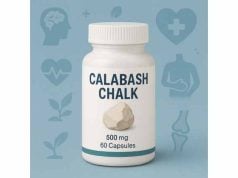
Mild Neurocognitive Disorder (MND) denotes subtle yet noticeable declines in one or more cognitive domains—such as memory, executive function, or attention—that fall below expected levels for an individual’s age and education but do not significantly interfere with independence in everyday activities. Often recognized as an early indicator of progressive brain changes, MND warrants timely evaluation to identify reversible causes, implement supportive strategies, and potentially slow progression. This comprehensive guide explores the spectrum of mild neurocognitive changes, details hallmark presentations, examines contributing factors, outlines diagnostic pathways, and presents evidence-based interventions to optimize cognitive health and quality of life.
Table of Contents
- Exploring the Spectrum of Mild Neurocognitive Changes
- Identifying Key Clinical Manifestations
- Uncovering Predisposing Elements and Prevention
- Approaches to Comprehensive Assessment
- Evidence-Based Intervention Strategies
- Frequently Asked Questions
Exploring the Spectrum of Mild Neurocognitive Changes
Mild Neurocognitive Disorder occupies a nuanced position between normal age-associated cognitive variability and more pronounced syndromes such as major neurocognitive disorder (dementia). In contrast to benign “senior moments,” individuals with MND experience objective declines confirmed through standardized testing, yet maintain functional independence in activities of daily living (ADLs) and instrumental ADLs (IADLs). The onset often emerges gradually—memory retrieval becomes slower, attention fluctuates, or planning tasks take extra effort—prompting concern among patients, family members, and clinicians.
Defining Characteristics
- Domain-Specific Declines: MND can manifest in a single area (e.g., memory) or across multiple domains (e.g., processing speed plus visuospatial skills).
- Preserved Independence: Despite difficulties, individuals manage self-care, household tasks, and social roles with minimal assistance.
- Objective Verification: Performance falls 1–2 standard deviations below normative means on validated neuropsychological measures.
Clinical Subtypes
- Amnestic MND: Predominant deficits in episodic memory—difficulty recalling recent conversations or appointments.
- Non-Amnestic MND: Impairment in other domains—language, visuospatial skills, attention, or executive function.
- Single vs. Multiple Domain: Some experience isolated issues in one domain, while others exhibit broader, multi-domain decline.
Pathophysiological Insights
Underlying mechanisms vary by subtype and etiology:
- Alzheimer-Related Changes: Early amyloid deposition and tau pathology often correlate with amnestic presentations.
- Vascular Contributions: Microinfarcts and small-vessel disease may cause slowed processing and executive dysfunction.
- Lewy Body Pathology: Visual hallucinations and fluctuating cognition may herald a Lewy body–related neurocognitive disorder.
- Mixed Etiologies: Many individuals exhibit overlapping pathologies, underscoring the complexity of brain aging.
Functional Consequences
While day-to-day living remains largely intact, MND can subtly affect:
- Work Performance: Prolonged task completion times, difficulty multi-tasking, or mild errors on routine assignments.
- Driving Safety: Hesitation at complex intersections, delayed reaction times, or minor navigation mistakes.
- Financial Management: Increased reliance on reminders, difficulty balancing checkbooks, or susceptibility to scams.
Early Recognition Importance
- Reversible Causes: Conditions like vitamin B₁₂ deficiency, hypothyroidism, or medication side effects can mimic MND and are treatable.
- Disease Modification: Lifestyle changes, cognitive rehabilitation, and emerging therapies may delay progression.
- Planning and Support: Early intervention enables advance care planning, caregiver education, and psychosocial support, preserving dignity and autonomy.
By comprehensively exploring the spectrum of mild neurocognitive changes, clinicians can distinguish MND from normal aging and more severe disorders, paving the way for targeted evaluation and personalized care. The next section examines specific clinical manifestations that raise suspicion for MND.
Identifying Key Clinical Manifestations
Mild Neurocognitive Disorder presents with a constellation of subtle yet impactful signs. Recognizing these manifestations—across memory, attention, language, executive function, and visuospatial abilities—is essential for timely assessment.
1. Memory-Related Indicators
- Repeated Questions: Asking the same question during a single conversation due to difficulty retaining new information.
- Lost Items: Frequently misplacing keys, glasses, or paperwork and taking longer to retrace steps.
- Missed Appointments: Overlooking scheduled events despite calendars and reminder alerts.
2. Attention and Processing Speed
- Distractibility: Difficulty sustaining focus during meetings, reading, or conversations—mind wanders more often than before.
- Slowed Processing: Simple mental calculations or decision-making take noticeably longer, leading to frustration.
- Task Switching Challenges: Trouble shifting between tasks; following multi-step instructions becomes overwhelming.
3. Language and Communication
- Word-Finding Pauses: Hesitation or use of vague terms (“thing,” “it”) during normal speech.
- Reduced Fluency: Shorter sentences, frequent “umm” fillers, or simplification of vocabulary.
- Comprehension Slips: Trouble following complex or rapid speech, especially in noisy environments.
4. Executive Function and Problem-Solving
- Planning Difficulties: Trouble organizing events, managing household tasks, or executing multi-step projects.
- Poor Judgment: Increased vulnerability to poor financial decisions or risky behaviors uncommon in the past.
- Reduced Initiative: Less motivation to start new projects or hobbies, preferring routine and familiar activities.
5. Visuospatial Abilities
- Navigation Errors: Difficulty reading maps, following GPS, or recognizing familiar routes—getting briefly lost in familiar areas.
- Visual Construction Problems: Challenges copying shapes or assembling simple puzzles.
6. Emotional and Behavioral Changes
- Anxiety or Irritability: Heightened frustration when recognizing cognitive slowing, leading to mood swings.
- Social Withdrawal: Avoidance of group settings or conversations to mask lapses and embarrassment.
- Compensatory Strategies: Overreliance on notes, alarms, or checklists to manage cognitive tasks.
Everyday Examples
“I used to breeze through my monthly reports, but now I need twice as long and still make small errors.”
“I find myself cancelling dinner plans because I worry I won’t remember the restaurant address or instructions.”
Practical Identification Tips
- Cognitive Logs: Encourage individuals to note when and where lapses occur, tracking patterns over weeks.
- Collateral Reports: Family or coworkers often notice subtle changes before the individual does—invite their insights.
- Screening Questions: Simple queries like “Do you forget appointments that you scheduled yourself?” can flag concerns.
Understanding these clinical manifestations helps differentiate MND from normal age-related forgetfulness and guides targeted diagnostic evaluation. The subsequent section delves into risk factors and preventive strategies that shape cognitive trajectories.
Uncovering Predisposing Elements and Prevention
Mild Neurocognitive Disorder arises from an interplay of nonmodifiable and modifiable factors. While age and genetics set the stage, lifestyle and health management can tip the balance toward resilience or decline.
Nonmodifiable Risk Factors
- Advanced Age: Risk increases steadily after age 65, reflecting cumulative brain changes.
- Genetic Predisposition: APOE ε4 allele carriers and family history of Alzheimer’s disease have elevated risk.
- Sex and Ethnicity: Some studies suggest slight variations in incidence across populations, though findings remain mixed.
Modifiable Risk Factors
- Cardiovascular Health
- Hypertension: Chronically high blood pressure damages small cerebral vessels, impairing perfusion.
- Diabetes and Insulin Resistance: Hyperglycemia and metabolic dysfunction accelerate neuronal injury.
- Hyperlipidemia: Elevated cholesterol contributes to atherosclerosis, reducing cerebral blood flow.
- Lifestyle Behaviors
- Physical Inactivity: Sedentary habits correlate with reduced neurogenesis and cognitive function.
- Smoking and Excess Alcohol: Tobacco and excessive drinking promote oxidative stress and neuroinflammation.
- Dietary Patterns: Diets high in saturated fats and sugars foster systemic inflammation and cognitive decline.
- Sleep and Mood Disorders
- Sleep Apnea and Insomnia: Disrupted sleep impairs memory consolidation and accelerates neurodegeneration.
- Depression and Anxiety: Chronic mood disturbances are linked to hippocampal atrophy and executive deficits.
- Social and Cognitive Engagement
- Isolation: Limited social interactions reduce cognitive stimulation, increasing vulnerability.
- Mental Inactivity: Lack of novel challenges or intellectual pursuits diminishes cognitive reserve.
Preventive Strategies
- Cardiovascular Optimization
- Blood Pressure Control: Target <130/80 mmHg through diet, exercise, and antihypertensives.
- Glucose Management: Monitor HbA1c, adopt low-glycemic diets, and use medications as prescribed.
- Lipid Regulation: Statins and dietary adjustments to maintain healthy cholesterol levels.
- Physical and Cognitive Activities
- Aerobic Exercise: 150 minutes weekly of moderate activity boosts BDNF and vascular health.
- Strength and Balance Training: Reduces fall risk and supports overall brain perfusion.
- Cognitive Training: Puzzles, language learning, and strategy games enhance neural network efficiency.
- Nutrition for Brain Health
- Mediterranean/MIND Diet: Emphasize green leafy vegetables, berries, fish, nuts, and olive oil.
- Antioxidant and Anti-Inflammatory Foods: Berries, legumes, and whole grains reduce oxidative damage.
- Sleep Hygiene and Stress Management
- Consistent Sleep Schedule: Go to bed and wake at the same times; avoid screens before bedtime.
- Mindfulness and Relaxation: Meditation, yoga, or deep-breathing lower cortisol and support memory processing.
- Social Connection and Purpose
- Community Involvement: Clubs, volunteer work, and group classes foster cognitive and emotional well-being.
- Lifelong Learning: Formal courses or self-directed projects sustain intellectual curiosity.
Practical Prevention Tips
- Set calendar alerts for exercise, cognitive activities, and social engagements.
- Partner with friends or family for walking groups, book clubs, or cooking healthy meals together.
- Use smartphone apps to monitor sleep patterns and receive reminders for health checks.
By proactively managing health, lifestyle, and social engagement, individuals can bolster cognitive reserve and potentially delay or mitigate the progression of Mild Neurocognitive Disorder. When warning signs emerge, structured diagnostic approaches clarify underlying causes—a crucial step detailed next.
Approaches to Comprehensive Assessment
Accurate diagnosis of Mild Neurocognitive Disorder requires a multidimensional evaluation that distinguishes it from normal aging, reversible causes, and more severe neurocognitive conditions.
Step 1: Detailed Clinical Interview
- Symptom History: Document onset, duration, and progression of cognitive changes from patient and caregiver perspectives.
- Functional Impact: Assess ability to perform ADLs (dressing, bathing) and IADLs (managing finances, driving).
- Medical and Medication Review: Exclude contributing factors such as polypharmacy, depression, sleep disorders, or thyroid dysfunction.
Step 2: Cognitive Screening Instruments
- Montreal Cognitive Assessment (MoCA): Sensitive to MND; assesses multiple domains including memory, attention, language, and executive function.
- Mini-Mental State Examination (MMSE): Provides a global cognitive snapshot; adjustments needed for education level.
- Clock Drawing Test: Quick visuospatial and executive function check.
Step 3: Comprehensive Neuropsychological Testing
- Domain-Specific Batteries:
- Memory: Hopkins Verbal Learning Test, Brief Visuospatial Memory Test.
- Executive Function: Trail Making Test Parts A and B, Wisconsin Card Sorting Test.
- Language: Boston Naming Test, verbal fluency tasks.
- Attention and Processing Speed: Digit Symbol Substitution, Stroop Test.
Step 4: Laboratory and Medical Investigations
- Blood Work: CBC, metabolic panel, B₁₂, folate, TSH, HIV, syphilis serology to detect reversible causes.
- Neuroimaging:
- MRI: Identifies vascular lesions, white matter hyperintensities, hippocampal atrophy.
- PET Scans: Amyloid or FDG-PET if Alzheimer’s pathology or frontotemporal patterns suspected.
Step 5: Differential Diagnosis
- Normal Aging vs. MND: Frequency, severity, and functional impact of complaints exceed benign age-related changes.
- Depression Pseudodementia: Mood assessment to rule out cognitive symptoms secondary to depression.
- Delirium and Acute Confusional States: Assess for acute changes in consciousness, fluctuating attention, and medical precipitants.
Step 6: Functional and Quality-of-Life Measures
- Activities of Daily Living (ADL) Scales: Katz Index of Independence.
- Instrumental ADL (IADL) Scales: Lawton IADL scale measures complex daily tasks.
- Quality-of-Life Questionnaires: Evaluate emotional well-being, social engagement, and perceived cognitive abilities.
Step 7: Collaborative Multidisciplinary Review
- Neurologists, Geriatricians, Psychologists, and Neuropsychologists synthesize findings to determine diagnosis, subtype, and severity.
- Family Conferences: Communicate evaluation results, prognosis, and care recommendations clearly and compassionately.
Practical Assessment Tips
- Encourage patients to bring a trusted informant to provide collateral history.
- Schedule evaluations when the patient is rested and medications are stable to optimize performance.
- Use culturally and educationally appropriate tests to avoid bias.
A thorough, stepwise assessment ensures accurate identification of Mild Neurocognitive Disorder, differentiates it from other conditions, and informs individualized care planning. The next section outlines management and treatment approaches that support cognitive function and quality of life.
Evidence-Based Intervention Strategies
Managing Mild Neurocognitive Disorder combines pharmacological, nonpharmacological, and psychosocial interventions tailored to individual profiles, with the goal of sustaining cognitive abilities and independence.
1. Pharmacological Approaches
- Cholinesterase Inhibitors: Donepezil, rivastigmine, and galantamine may provide modest cognitive benefits, especially in amnestic subtypes linked to Alzheimer’s pathology.
- Memantine: An NMDA receptor antagonist used off-label to regulate glutamatergic activity and support cognitive stability.
- Treating Comorbidities: Optimize control of hypertension, diabetes, depression, and sleep disorders—addressing these conditions can indirectly improve cognition.
Practical Advice:
- Monitor for side effects—gastrointestinal upset with cholinesterase inhibitors—and adjust dosages gradually.
- Coordinate medication management with primary care providers and specialists to avoid polypharmacy risks.
2. Cognitive Rehabilitation and Training
- Memory Compensation Techniques: Use external aids—smartphones, calendars, pill organizers—and teach mnemonic strategies (chunking, visualization).
- Attention and Executive Function Workshops: Computer-based programs (e.g., BrainHQ) target processing speed and working memory through adaptive exercises.
- Reminiscence Therapy: Structured discussion of past experiences stimulates memory networks and fosters self-esteem.
Practical Advice:
- Schedule regular, brief training sessions (20–30 minutes) to maintain engagement and prevent fatigue.
- Incorporate real-life tasks—grocery lists, recipe steps—into rehabilitation to ensure transfer of skills.
3. Lifestyle and Behavioral Interventions
- Physical Activity
- Aerobic Exercise: Walking groups, cycling, or swimming three to five times weekly improve cerebral perfusion and neurotrophic support.
- Strength and Balance Training: Tai chi or yoga reduce fall risk and enhance brain–body integration.
- Dietary Modifications
- MIND Diet Adherence: Emphasize vegetables, nuts, berries, whole grains, fish, and poultry; limit red meats and sweets.
- Hydration and Moderate Caffeine: Maintain adequate fluid intake; small amounts of caffeine may transiently boost alertness.
- Sleep and Stress Management
- CBT for Insomnia: Address sleep disturbances that impair memory consolidation.
- Mindfulness-Based Stress Reduction (MBSR): Reduces cortisol and improves attention regulation.
Practical Advice:
- Partner with a friend or family for physical and cognitive activities to boost motivation and social support.
- Use sleep logs and relaxation apps to track progress and maintain routines.
4. Psychosocial Supports
- Support Groups: Memory cafés and caregiver groups offer peer connection, reduce isolation, and share practical coping strategies.
- Family Education: Provide training on communication techniques, daily structure, and coping with behavioral changes.
- Occupational Therapy: Tailor home modifications—grab bars, labeling systems—to promote safety and autonomy.
Practical Advice:
- Develop a written “care plan” detailing daily routines, emergency contacts, and step-by-step guides for common tasks.
- Encourage caregivers to seek respite services to prevent burnout.
5. Assistive Technologies
- Smart Home Devices: Voice-activated assistants (e.g., smart speakers) set reminders, answer questions, and control home environments.
- GPS and Tracking Apps: Enhance driving safety and provide peace of mind for families.
- Medication Dispensing Systems: Automated pill dispensers reduce error and ensure adherence.
Practical Advice:
- Select technologies that match user comfort levels; provide hands-on training and simple user guides.
- Start with one or two devices to minimize overwhelm and gradually introduce others.
6. Monitoring and Follow-Up
- Regular Reassessments: Cognitive tests every 6–12 months to track progression and adjust interventions.
- Outcome Metrics: Use goal attainment scaling (GAS) to measure functional improvements meaningful to the individual.
- Advance Care Planning: Discuss future preferences while insight remains intact—legal, medical, and financial directives.
By blending pharmacological treatments with targeted cognitive rehabilitation, lifestyle optimization, and psychosocial supports, individuals with Mild Neurocognitive Disorder can maintain functional abilities, enhance quality of life, and delay progression. The final section addresses common questions to clarify lingering concerns.
Frequently Asked Questions
What distinguishes mild neurocognitive disorder from dementia?
Mild neurocognitive disorder features cognitive decline confirmed by testing but maintains functional independence; dementia involves significant impairment in daily activities and greater severity of deficits.
Can lifestyle changes reverse cognitive decline?
While not a cure, regular exercise, a brain-healthy diet, cognitive engagement, and cardiovascular risk control can slow progression and improve cognitive performance.
Are there approved medications specifically for MND?
No medications are officially FDA-approved for MND; cholinesterase inhibitors and memantine are used off-label based on Alzheimer’s research, showing modest benefits in some individuals.
How often should cognitive assessments occur?
Reevaluations every 6–12 months help monitor trajectory, evaluate treatment effectiveness, and adjust care plans before significant functional decline occurs.
What support is available for caregivers?
Caregivers can access support groups, respite services, counseling, and educational workshops on communication strategies, behavior management, and self-care.
Disclaimer: This information is provided for educational purposes only and does not substitute for professional medical advice. Consult qualified healthcare providers for personalized diagnosis and treatment recommendations.
If you found this guide helpful, please share it on Facebook, X (formerly Twitter), or your preferred platform, and follow us on social media for more cognitive health resources. Your support enables us to keep delivering quality content!








